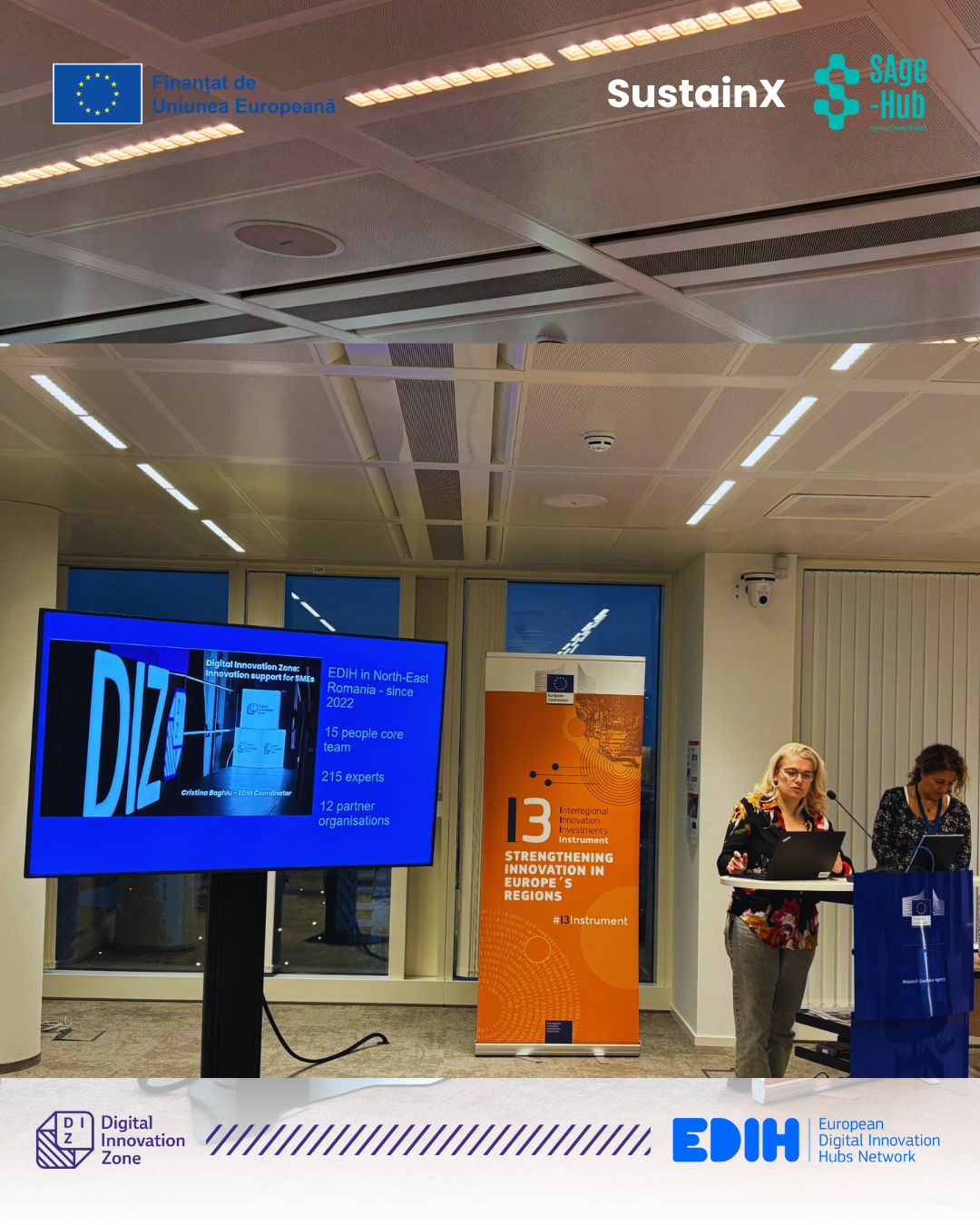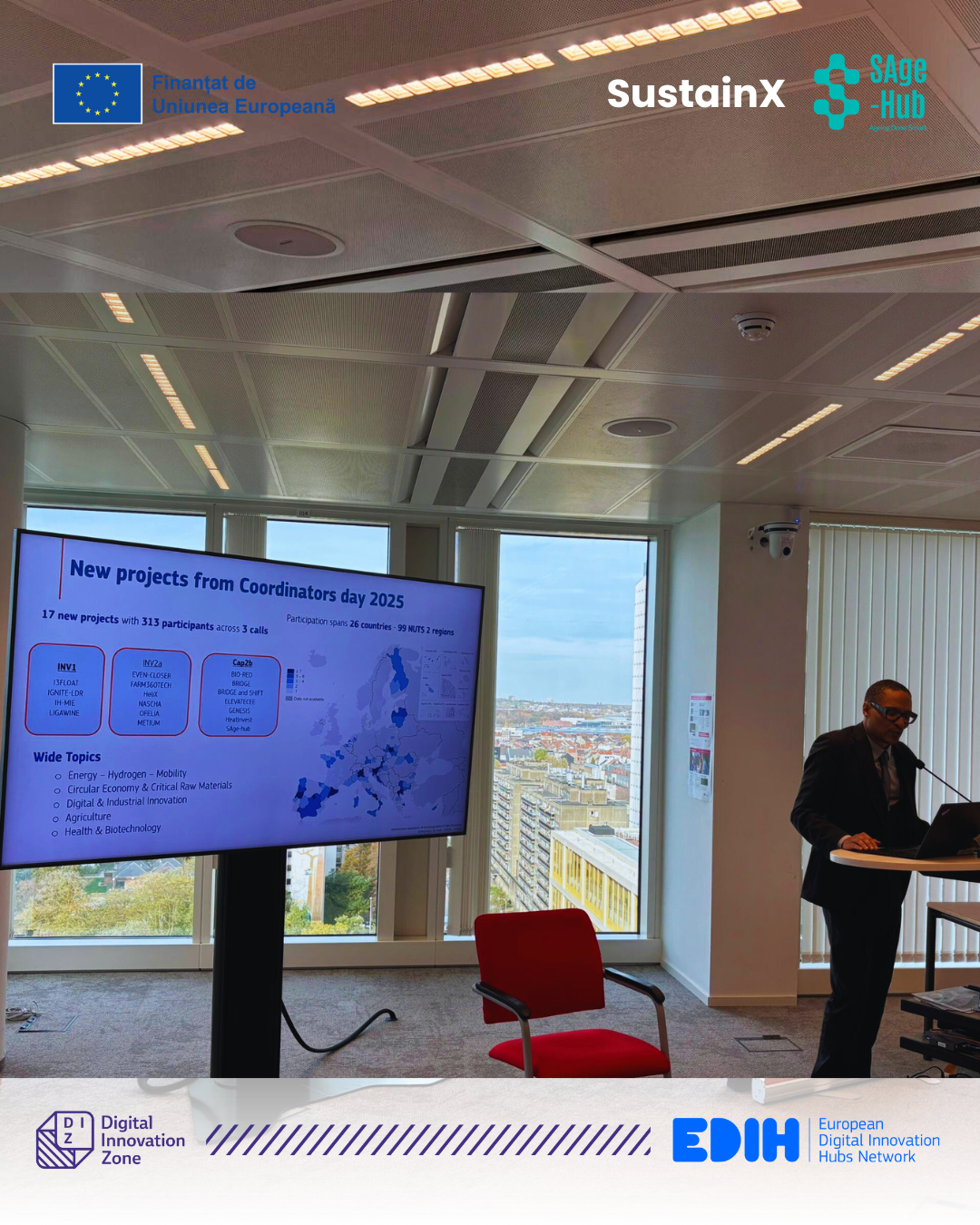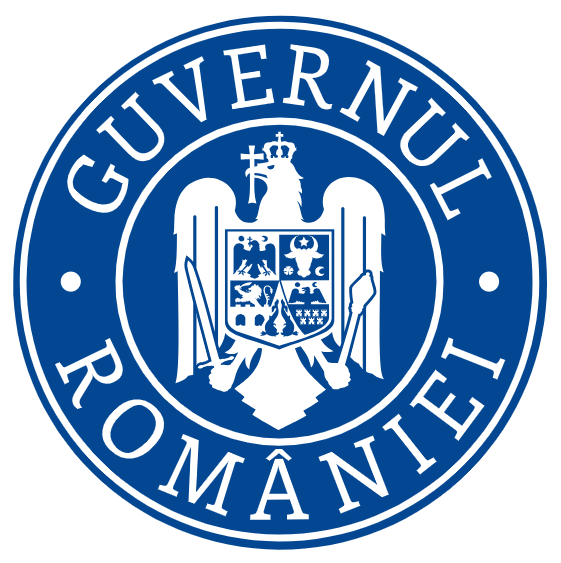On 5–6 November 2025, the Digital Innovation Zone (DIZ) team represented by Cristina Baghiu (Hub Coordinator) and Adina Serediuc (Program Lead, SAge-Hub) took part in the I3 Newcomers Coordinator’s Event, held in Brussels by the European Innovation Council and SMEs Executive Agency (EISMEA).
The event targeted coordinators of the most recent projects approved in the 2025 call and funded through the European Interregional Innovation Investments (I3) instrument, providing an overview of the programme’s principles, ways of working with EISMEA and, most importantly, how projects can generate tangible interregional investment cases.
DIZ, an innovation hub for SMEs in Romania’s North-East
As a European Digital Innovation Hub active in the North-East region since 2022, DIZ was presented as an example of regional innovation infrastructure:
- 15 people in the core team,
- 215 experts in the network,
- 12 partner organisations covering the public, private, academic sectors and civil society.
This partnership architecture is the foundation from which the SustainX and SAge-Hub projects have grown described in the presentation as “two pieces of the same puzzle” of interregional investment in innovation.
Day one: inspiration, rules, and positioning SAge-Hub & SustainX within the I3 ecosystem
The event opened with a focus on the key rules of the Grant Agreement the document that underpins the implementation of any EU-funded project. It then showcased the newest projects selected for funding through the #I3Instrument.
SAge-Hub – an interregional hub for Smart Ageing
SAge-Hub, coordinated by DIZ, is one of 17 projects funded in 2025 through the I3 instrument, Capacity Building (Cap2B) category. The project aims to:
- Strengthen the capacities of less developed and outermost regions to integrate into interregional innovation ecosystems and European value chains.
- Develop and test Smart Ageing solutions technologies, services and collaboration models that support active ageing, social participation, and access to health and care services.
- Work within a “quadruple helix” consortium, bringing together:
- public authorities,
- EDIHs and industry actors ((DIZ, IeD, Prizztech, Health Cluster Portugal, AKMI),
- universities and research centres (e.g., UMF „Gr. T. Popa” Iași, I2CAT, Institut Pedro Nunes),
- civil-society organisations (Caritas Coimbra).
SAge-Hub – innovation lab for the “silver economy”
In the presentation it was emphasized that SAge-Hub will operate as an innovation laboratory for the “silver economy,” using:
- Regional roadmapping based on Smart Specialisation strategies (S3);
- SAge Living Labs and co-creation workshops, where SMEs test solutions in real-life conditions together with end users and authorities;
- a network of Regional Innovation Ambassadors that connects local actors with regional and interregional funders and develops cross-border investment portfolios in innovation.
The project has set clear targets: 8 co-creation workshops, 30 SMEs in the pipeline, 6 cross-border partnerships, 4 regional policies influenced, 10 scale-ready cases at TRL 4–6, so investors and public programmes can see traction, not just intent.
SustainX – interregional one-stop-shop for investments in the green & digital transition
The second project presented, SustainX, was highlighted as a good-practice example of how to build interregional investment cases in less developed regions.
SustainX is designed as a multi-regional one-stop-shop (Romania, Greece, Bulgaria, Latvia, Spain – Canary Islands) that:
- surveys and selects SME innovation cases for the green and digital transition;
- treats each region as a “learning node,” where solutions are piloted and collaboration models are tested before scaling across the network;
- engages public authorities as full partners to anchor activities in S3 priorities and ERDF programme rules;
- co-creates with managing authorities a unified investment support model, compatible with public-funding mechanisms from day one.
The SustainX case study presented by the DIZ team opened an interactive workshop on developing synergies and success strategies in I3 projects, showing step-by-step how to build interregional investment funnels.
SAge-Hub & SustainX: two pieces of the same puzzle
In the presentation, the two projects were described as “2 pieces of the puzzle” that connect:
- The public sector — from Santa Cruz Sostenible and Dirección General Autónomos in the Canary Islands to regional authorities in Romania, Greece, Portugal, and Finland;
- Industry & EDIHs — DIZ, IeD, Prizztech, Health Cluster Portugal, AKMI, IMP³ROVE;
- Academia & research — technical universities, research centres, and institutes specialised in innovation;
- Civil society, via organisations working directly with end beneficiaries (e.g., Caritas Coimbra).
In the presented “puzzle,” SustainX and SAge-Hub are placed across the TRL 1–8 chain alongside other DIZ programmes (awareness and skills development such as PRECISEU, MERIT, CAMPUS) and EDIH services (test-before-invest, access to finance, skills development).
As a result, SMEs and innovators working with Digital Innovation Zone can enter through a “single door” and receive unified support from idea to scale-up, interconnected with regional and interregional investments.
How to create interregional investment cases: identification – pipeline – selection
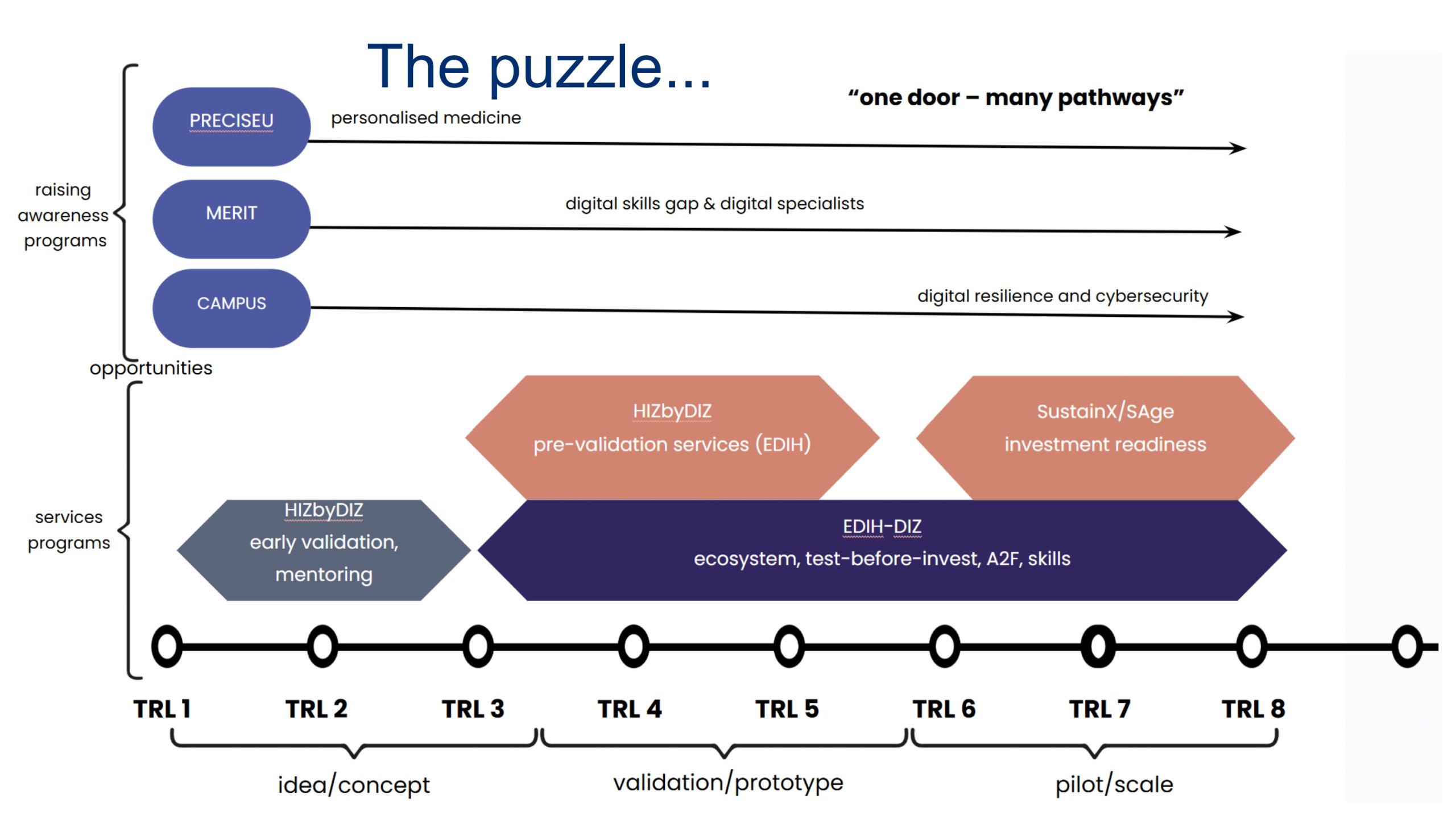
The workshop led by the DIZ team detailed the common SustainX & SAge-Hub process for generating interregional investments:
- Identification
- SustainX operationalizes an interregional funnel to identify SMEs with solutions for the green and digital transition across all participating regions.
- SAge-Hub feeds the pipeline with solutions coming from Living Labs and Smart Ageing co-creation workshops.
- Pipeline
- Identified cases are assessed and supported through EDIH services (mentoring, test-before-invest, connections to partners and funders).
- Each region contributes its own portfolio, learning from others’ experience and replicating approaches that work.
- Selection – shared gate logic
- Gate 1 – Fit & relevance: alignment with S3 priorities and potential to enter a cross-border value chain.
- Gate 2 – Readiness: evaluation of technical, market, and business maturity, targeting TRL 4–6 in Cap2B.
- Gate 3 – Investability: clarity of the business model, evidence of demand, and the financing pathway (public instruments + private capital).
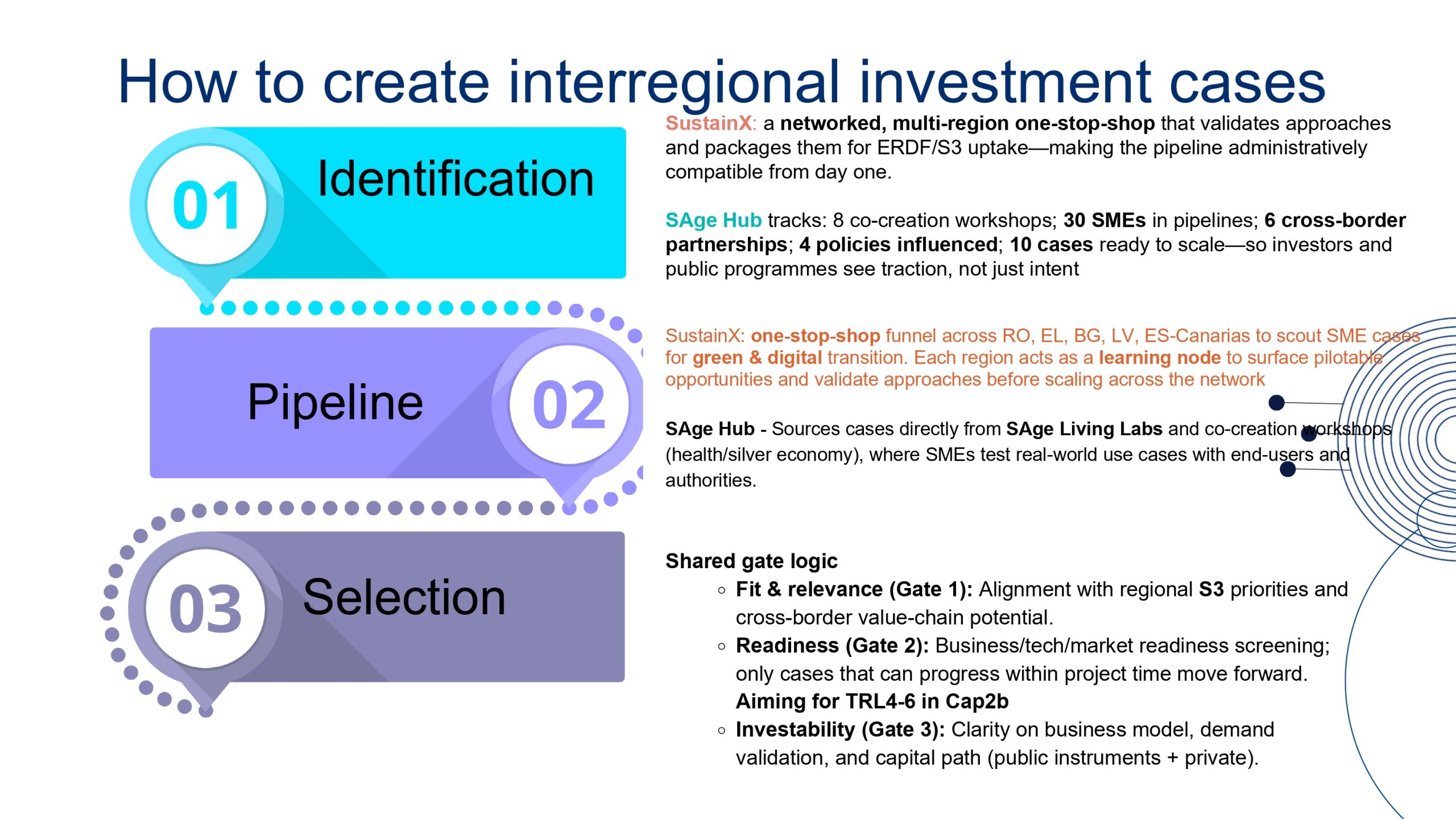
Result: investment cases administratively and technically ready to be taken up by public programmes and private investors, not just isolated pilot projects.
Day two: tools, monitoring, and coordination lessons
The second day was dedicated to monitoring, dissemination, and exploitation of project results, with a focus on the effective use of EISMEA instruments. Among the tools mentioned was the Horizon Results Booster platform (www.horizonresultsbooster.eu), which helps beneficiaries enhance the impact of their projects and position them on European markets.
DIZ’s participation in the Brussels event confirmed the organisation’s active role in the European innovation ecosystem. Through SAge-Hub and SustainX, DIZ connects Romania’s North-East region to European networks that transform economic sectors through innovation; contributes to the development of European value chains in key domains—Smart Ageing, green and digital transition; tests concrete support models for investments, which can be adopted by regional authorities in their policies; and positions DIZ as a strategic innovation hub at the European level, where ideas move through a structured pathway of mentoring, testing, validation, and investment readiness.
The two investment-in-innovation programmes—SAge-Hub and SustainX—show how DIZ envisions the future: interregional collaboration, solutions tested in real-life settings, and investments that leave lasting benefits in communities. And this is just the beginning.


